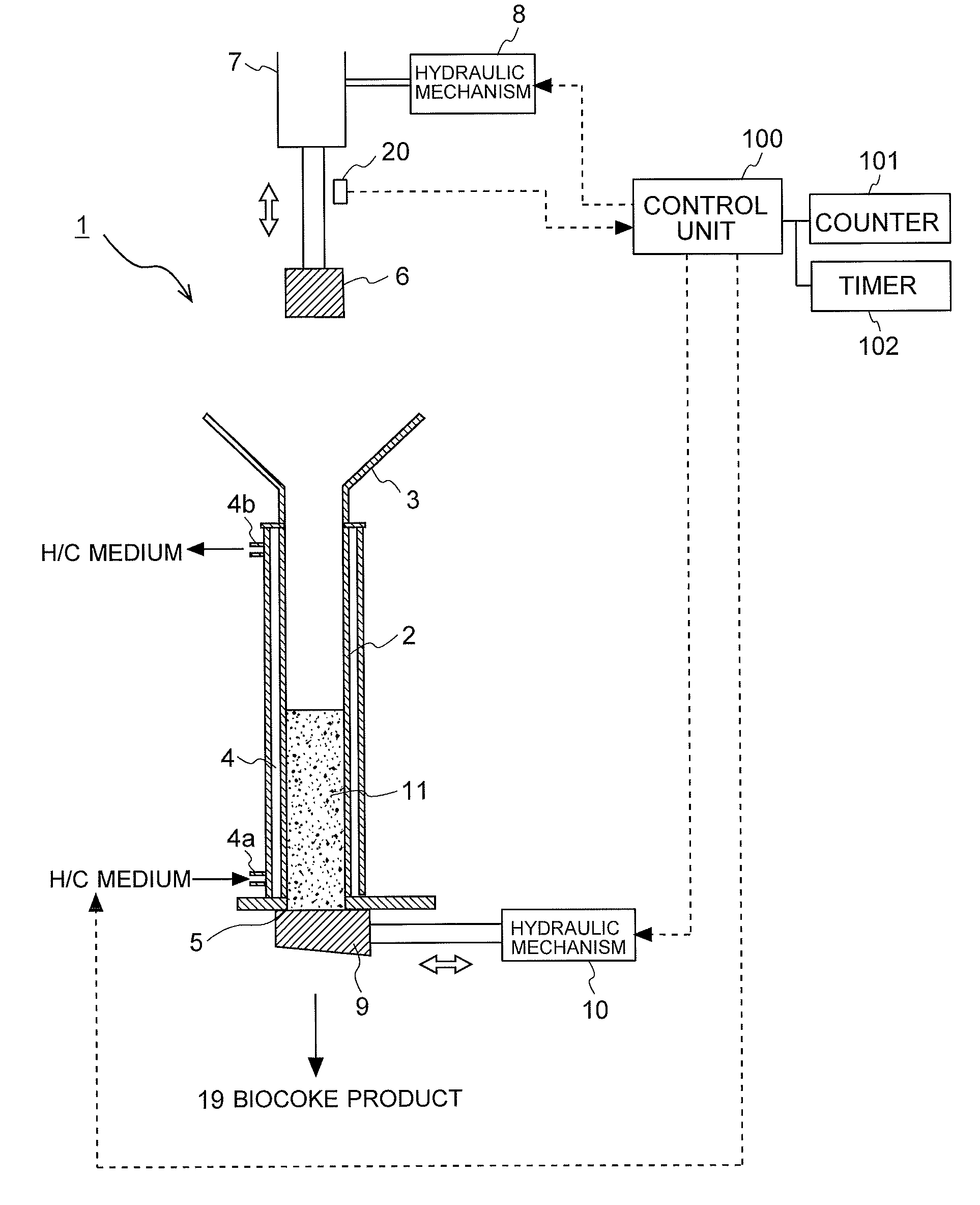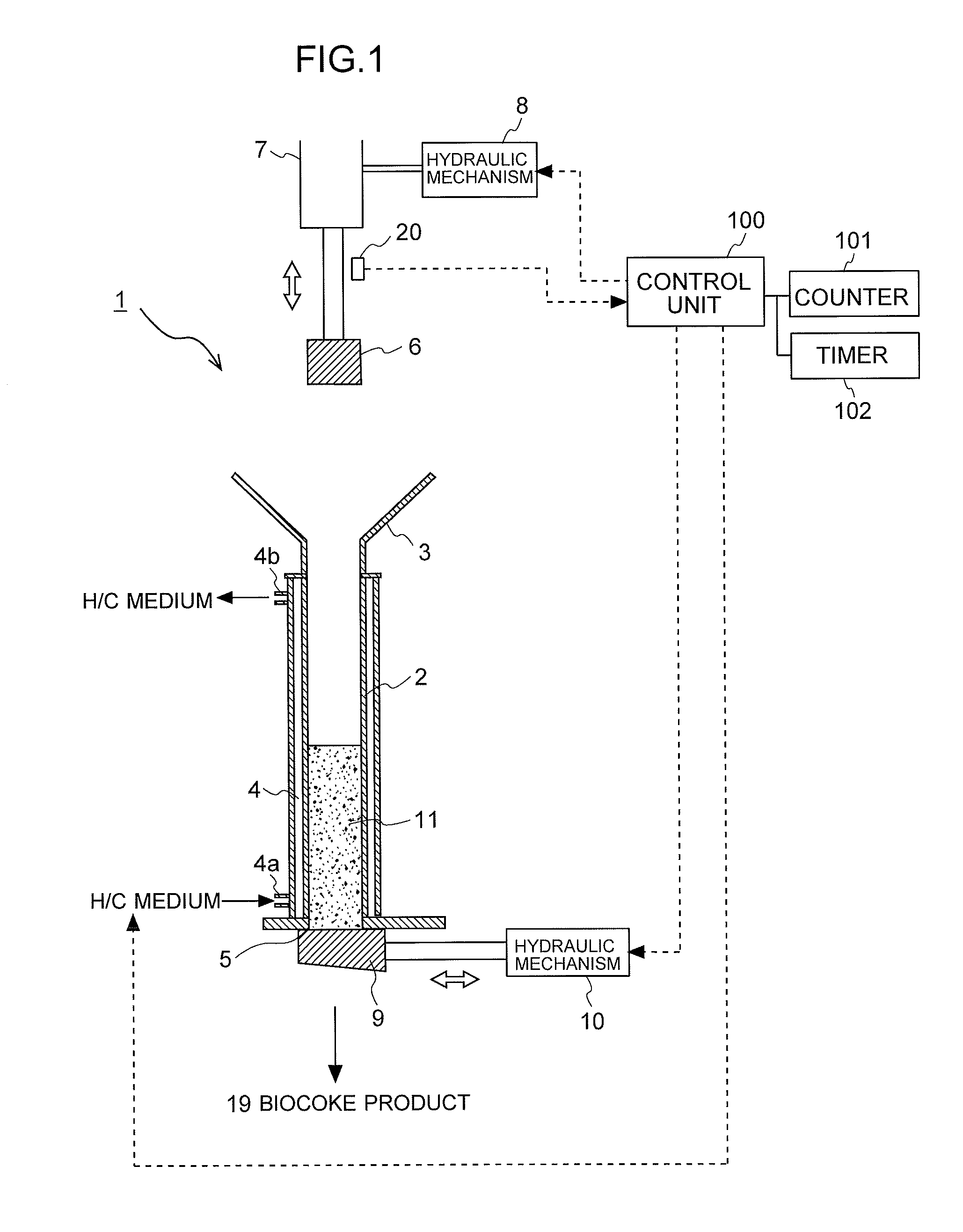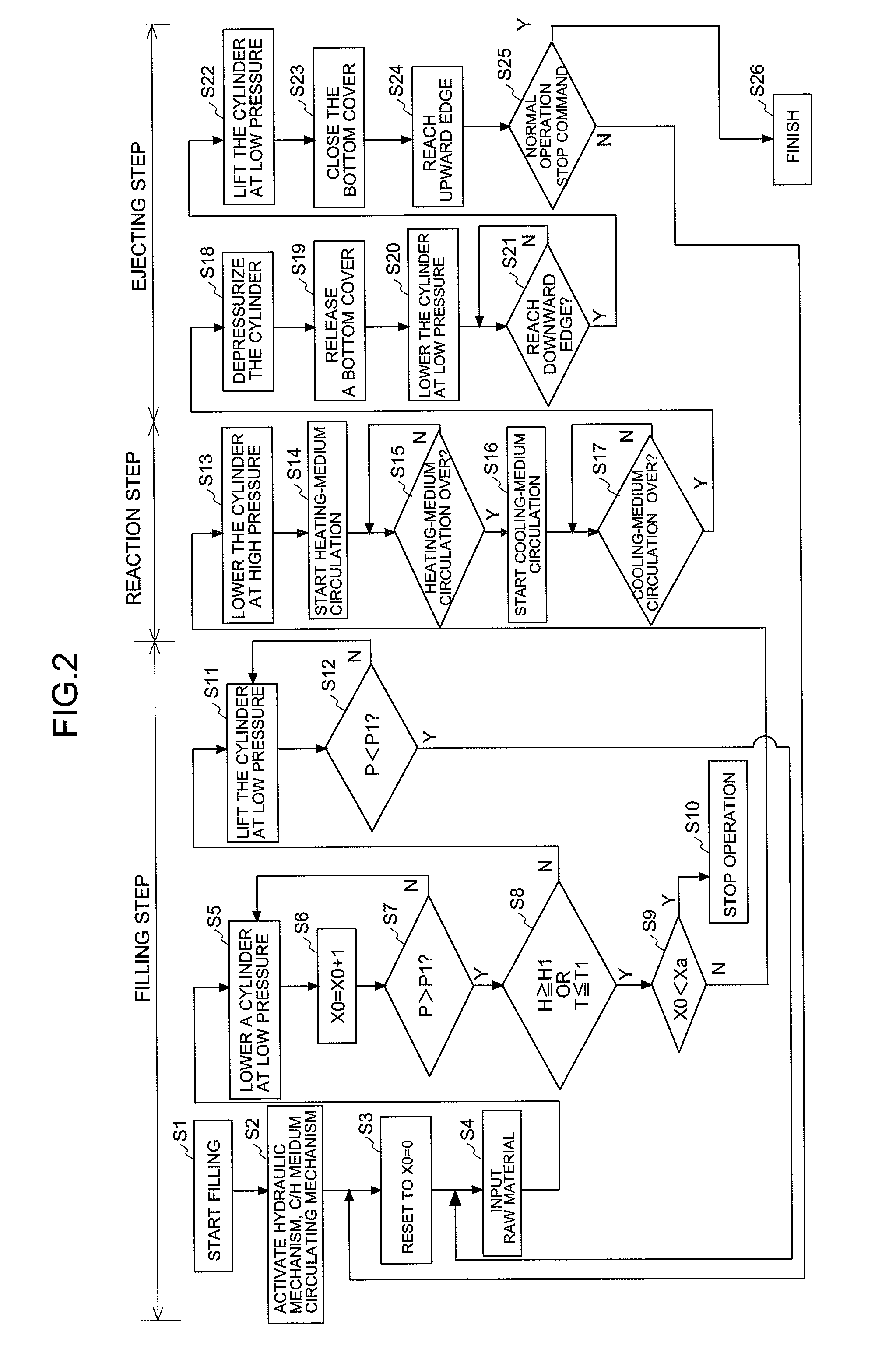Biocokes producing method and apparatus
a biocoke and apparatus technology, applied in the direction of biofuels, fuels, waste based fuels, etc., can solve the problems of large reaction container and low bulk density, and achieve the effect of reducing the amount of pulverized biomass, and reducing the amount of biocoke produced
- Summary
- Abstract
- Description
- Claims
- Application Information
AI Technical Summary
Benefits of technology
Problems solved by technology
Method used
Image
Examples
Embodiment Construction
[0033]A preferred embodiment of the present invention will now be described in detail with reference to the accompanying drawings. It is intended, however, that unless particularly specified, dimensions, materials, shape, its relative positions and the like shall be interpreted as illustrative only and not limitative of the scope of the present invention. In the present invention, biomass used as raw material for producing biocokes is organic matter attributed to photosynthesis. The biomass may be ligneous matters, grass plant, crops, agricultural matters, or the like. For example, biomass may be lumber waste, thinned lumber, pruned branches, plants, agricultural waste and kitchen waste such as coffee grinds and used tea leaves.
[0034]In a preferred embodiment of the present invention, pulverized biomass whose moisture content is adjusted to a prescribed percentage of moisture content as needed, is used as a raw material. The pulverized biomass may be biomass of a small grain size su...
PUM
| Property | Measurement | Unit |
|---|---|---|
| compressive strength | aaaaa | aaaaa |
| compressive strength | aaaaa | aaaaa |
| specific gravity | aaaaa | aaaaa |
Abstract
Description
Claims
Application Information
 Login to View More
Login to View More - R&D
- Intellectual Property
- Life Sciences
- Materials
- Tech Scout
- Unparalleled Data Quality
- Higher Quality Content
- 60% Fewer Hallucinations
Browse by: Latest US Patents, China's latest patents, Technical Efficacy Thesaurus, Application Domain, Technology Topic, Popular Technical Reports.
© 2025 PatSnap. All rights reserved.Legal|Privacy policy|Modern Slavery Act Transparency Statement|Sitemap|About US| Contact US: help@patsnap.com



